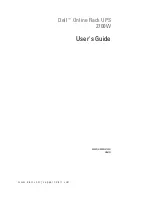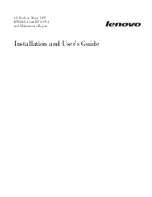
Safety Precautions
Octane Basic User Guide
Page 8 of 25
2.5
RADIATION SAFETY
The electron microscope generates ionizing radiation when the electron beam is energized. The
detector is designed to have radiation leakage far less than the allowable level when properly mounted
with all covers and shielding in place.
EDAX warrants that its detectors and microscope interfaces when assembled and installed per EDAX
Engineers or Representatives, will provide Radiation Safety performance levels that will be in
compliance with the original Microscope design specifications.
Removal of any of the system's covers must be done by qualified EDAX Factory trained service engineers
or representatives. Opening covers or bypassing interlocks may expose users to radiation.
If the EDAX detector is removed from the microscope, it should be replaced by the original blanking port
cover provided by the microscope vendor.
Modification of covers or shielding or use of any other material than provided by EDAX or the
microscope vendor must be reviewed by a certified radiation expert and EDAX Inc. before use.
Caution:
The radiation levels should be checked around the instrument after any service in which
covers or any radiation containment parts were removed.
2.6
EXTENDING DETECTOR WINDOW LIFE
Introduction
Super Ultra-Thin Windows (SUTW) for EDS detectors were introduced to the EDS market several years
ago to improve the transmission of low energy X-rays (e.g. B, C, N, O) through the window. The SUTW is
constructed of a 300 nm thick polymer foil with an additional 40 nm of coatings to reduce visible light
transmission and permeability. The polymer window is stretched over a silicon grid which provides
support over larger areas. The goal of the window is to allow signal X-rays to pass through to the
detector component while providing a hermetic seal on the atmosphere surrounding the detection
element. While the SUTW serves its intended purpose very well, it can be damaged if care is not taken
by users of the EDS system into which the window is installed.
Recall that the overall window thickness is approximately 340 nm, which is 150 times thinner than the
average human hair. When the window is damaged, this contaminates the atmosphere surrounding the
X-ray detector which in turn can degrade detector performance or cause failure. Damage to the SUTW
can be caused by physical contact, excess vibration, exceeding pressure or temperature specifications,
vapor condensation, electrical discharge to the detector or other factors.
2.6.1
DO NOT ALLOW THE DETECTOR TO COME INTO CLOSE PROXIMITY OR CONTACT
WITH HIGH VOLTAGE COMPONENTS
Do not allow the detector to come into close proximity or contact with high voltage components inside
the electron microscope, e.g. the extraction grid of a video detector. This can lead to an unsafe electrical
discharge to the detector which may damage the window.
Summary of Contents for Apollo XF Octane
Page 1: ...Apollo XF XLT Octane Basic User Guide Rev 1 5 June 24 2016...
Page 4: ...Contents Octane Basic User Guide Page 4 of 25 This page is intentionally left blank...
Page 6: ...Introduction Octane Basic User Guide Page 6 of 25 This page is intentionally blank...
Page 23: ...Basic System Cabling Octane Basic User Guide Page 23 of 25 This page is intentionally blank...
Page 24: ...Basic System Cabling Octane Basic User Guide Page 24 of 25 This page is intentionally blank...









































